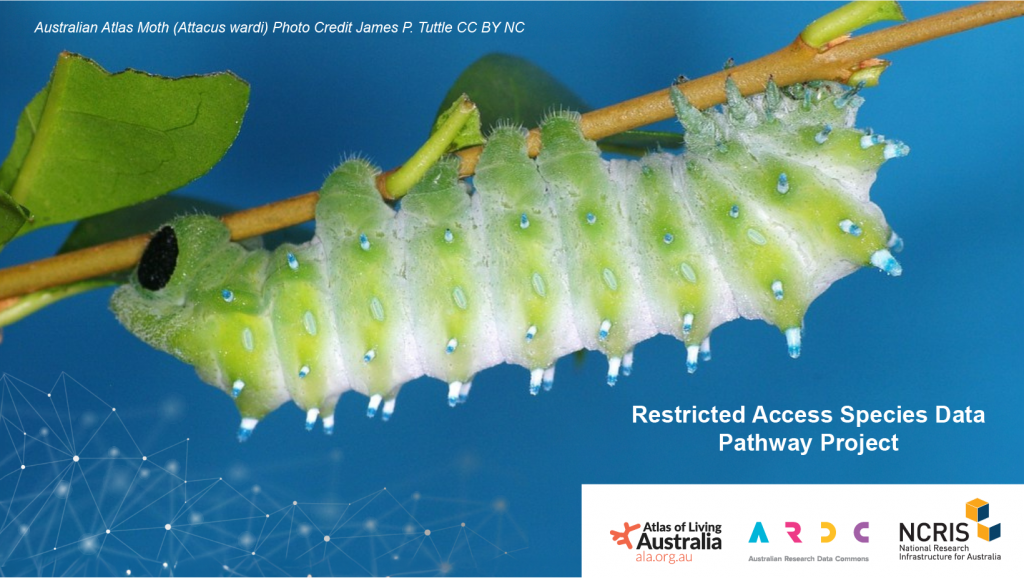The National Framework for the Sharing of Restricted Access Species Data provides a best practice guide for the custodians and users of species data that is restricted.
The development of the National Framework streamlines the process of accessing, sharing and managing restricted access species data across Australia, leading to better environmental management and improved species outcomes.

Caption: Sensitive species Australian Atlas Moth (Attacus wardi), photo credit James P. Tuttle CC BY NC
Historically, the difficulty of accessing restricted data on species has created barriers for research, environmental assessment and conservation. Data on species has been modified, withheld or shared based on inconsistent organisational polices. The National Framework is the first of its kind, jointly developed by the Atlas of Living Australia, the Australian Research Data Commons, all the government environmental agencies in Australia, herbaria, fauna collections, EcoCommons Australia and the Western Australian Biodiversity Science Institute.
Sharing the precise locations of restricted access species potentially risks disturbance, harm or exploitation. Therefore, access to some species information is limited, accessible only to data custodians and approved data users.
The National Framework outlines the principles to guide data custodians and users in the sharing of restricted access species data responsibly and appropriately. By adopting a nationally consistent evidence-based approach to managing restricted access species data, the National Framework aim to:
- promote responsible data-sharing practices
- give data custodians the confidence to safely share restricted access species data
- assist data custodians to maintain the consistency and quality of data.
“BirdLife Australia has long upheld a restricted access policy for sensitive species data as a basis for our citizen science work. This gives contributors the confidence that sharing their data will not put species at risk, while still allowing for its use in conservation. We are excited to now have a nationally consistent framework for sensitive species data sharing, which will massively increase the use and impact of bird and other species data in science and conservation” said Dr Golo Maurer, BirdLife Citizen Science Program Leader.
A Restricted Access Species Data Service (RASDS) for Australia
The new RASDS allows researchers and other trusted data users to request restricted access species data from all participating data custodians in Australia via a central point. The service allows data custodians a way of managing and storing request workflows.
“RASDS seeks to remove a major barrier to the flow of species data by standardising the way we describe and exchange sensitive species data” said Ron Avery, STL Biodiversity Information Systems Science, Economics and Insight Division, NSW Dept of Planning and Environment.
Partners:
These products were developed as part of a collaborative project between the Atlas of Living Australia, Australian Research Data Commons (ARDC), the Australian Government, state and territory governments, conservation agencies, museums, and herbaria, EcoCommons and the Western Australian Biodiversity Science Institute.
To find out more, visit the RASD webpage.